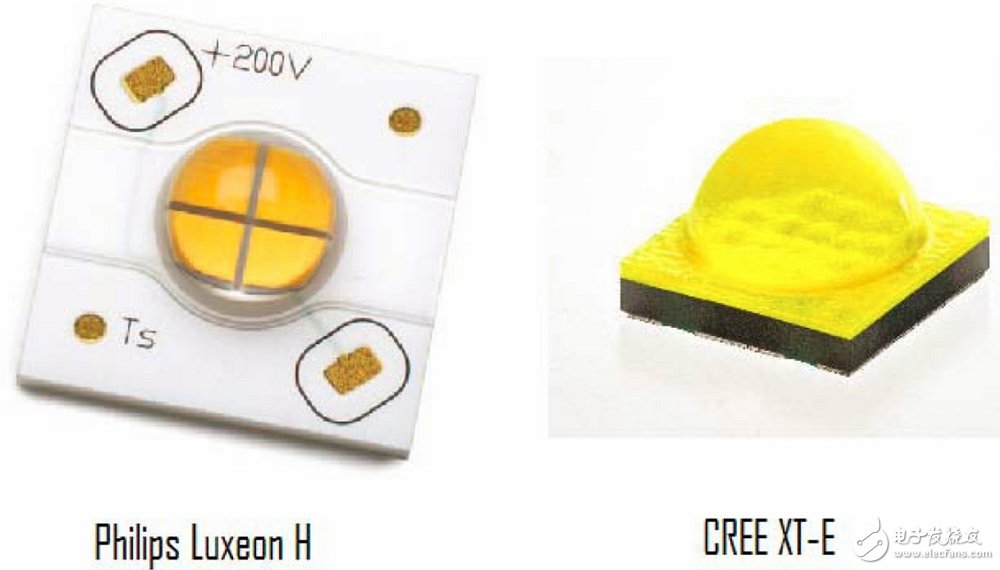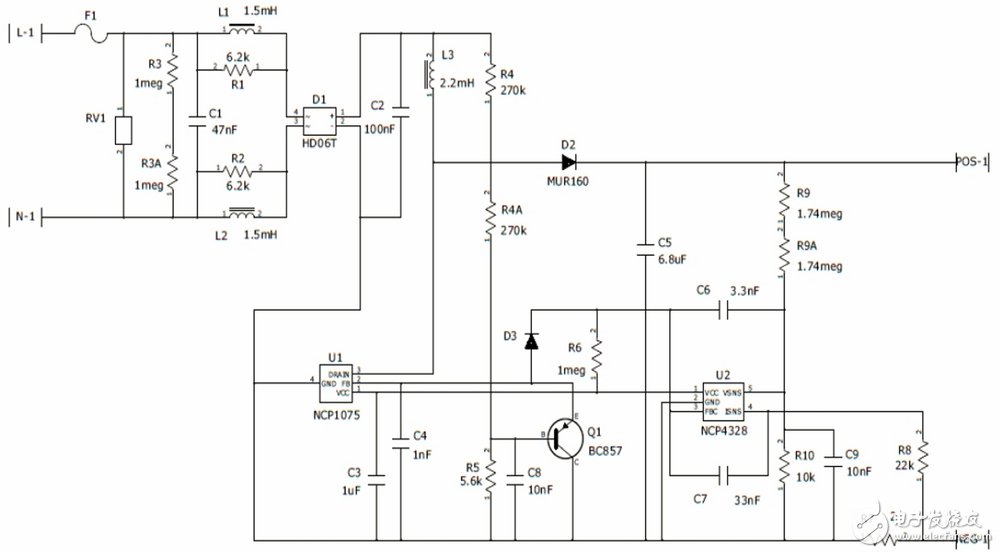Today, high-voltage LEDs are increasingly used, and many LED manufacturers such as CREE and Philips-Lumileds have introduced high-voltage LEDs. Typical forward voltages (VF) for these LEDs range from 24 V to over 200 V (Figure 1).
Part of the reason for driving this type of LED is that the industry is eager to optimize power conversion from AC mains voltage to LED string voltage while simplifying the driver electronics. In fact, in some cases, they are promoted in the name of "no drivers" because diode bridges and linear regulators can form simple circuits. But this method has several drawbacks. Since the LED is off when the input voltage is lower than the LED forward voltage during part of each line cycle, more LEDs are needed to produce the desired lumen output. In addition, LED bulbs exhibit more than 100% ripple at 100/120 Hz. In the field of lighting, the influence of low-frequency ripple on people's work efficiency has always existed. The industry is still studying the related effects, and set the acceptable LED light source flicker guidance, because the LED light source is more sensitive to flashing, unlike tungsten wire. The light continues to shine like that.

Figure 1: Example of a typical high voltage LED product
Boost topology to drive high voltage LEDs
If the LED string can be configured such that the forward voltage VF is higher than the peak AC supply voltage, then the boost topology is used to drive the LEDs. The output voltage must be higher than the applied AC input peak voltage. With a maximum voltage rating of 265 Vac, the absolute minimum LED voltage for this boost converter application is 265 Vac x √2 = 375 Vdc.
The boost converter provides high power factor and low total harmonic distortion (THD) for accurate current regulation regardless of LED forward voltage and AC line voltage, and solves ripple problems without the need to use it in the design. A large number of LEDs provide the required lumen output. It is worth noting that many low power LEDs can also be configured in long strings to provide the required high voltages, which is especially attractive in distributed lighting applications such as linear lamps.
The boost converters recommended in this paper provide a constant output current that compensates for input line voltage range and LED voltage and temperature variations. The design guidelines for this drive are as follows:
· Input voltage range: 200 – 265 Vac
· Output current: 30 mA typical
· Output voltage: 393 Vdc typical
· Energy efficiency: >88%
· Power factor: >0.9
· Load open circuit protection
ON Semiconductor's High Power Factor Boost LED Driver Solution for High Voltage LED Drivers
ON Semiconductor's boost drive solution uses the NCP1075 switching regulator. The NCP1075 integrates 700 V MOSFETs and control functions in a space-saving SOT-223 or PDIP-7 package. This single-chip switching regulator offers numerous protection features such as automatic recovery output short-circuit protection with timer detection (no need to worry about auxiliary winding coupling), automatic recovery overvoltage protection with auxiliary winding operation, AC input line voltage detection (enhanced low) Protection under input voltage conditions). In addition, this solution also offers built-in Dynamic Self-Powered (DSS) functionality, eliminating the need for external biasing components. Since the bias winding is not required, the boost inductor can use off-the-shelf, low cost magnetic components.
In general, current mode converters must utilize analog multipliers to achieve high power factor. A simple transistor follower is used in this design example to force the converter to reduce the current consumption near the zero crossing of the AC mains. Combined with a small capacitor after the input diode bridge, this control method sets the mains line current to follow the applied AC line voltage waveform, thus providing a high power factor.

Figure 2: A diagram of the boost LED driver circuit based on the NCP1075 and NCP4328A.
Solar power is the ultimate renewable energy source whether you're an eco-minded consumer or practical individualist. The sun's light is sustainable energy that provides a resource that is renewable and has a very low carbon footprint. Solarhome is a premier provider of reliable, durable, proven photovoltaic systems from leading manufacturers, allowing you to harness this free energy alternative. Our grid-tie and battery backup options mean those cloudy days and long nights won't leave you without electricity.
250 Watt Solar Panel,Solar Panel,200 Watt Solar Panel,Solar Module
Yangzhou Beyond Solar Energy Co.,Ltd. , https://www.ckbsolar.com
